Lacemakers’ Studio
While the names of the lacemakers whose handmade creations appear in Threads of Power were rarely recorded, we can still honor their art and labor. As practitioners of a living art, contemporary lacemakers carry forward the design knowledge and hand skills developed over five hundred years of lacemaking. Subverting the historical power dynamic of the invisible lacemaker and the wealthy patron, many contemporary lacemakers use the medium to assert their identity, exploring issues of gender, community, and ritual that bridge the past and present. This Lacemakers’ Studio—a collaboration between Bard Graduate Center and Brooklyn Lace Guild—celebrates this history of tradition and innovation.
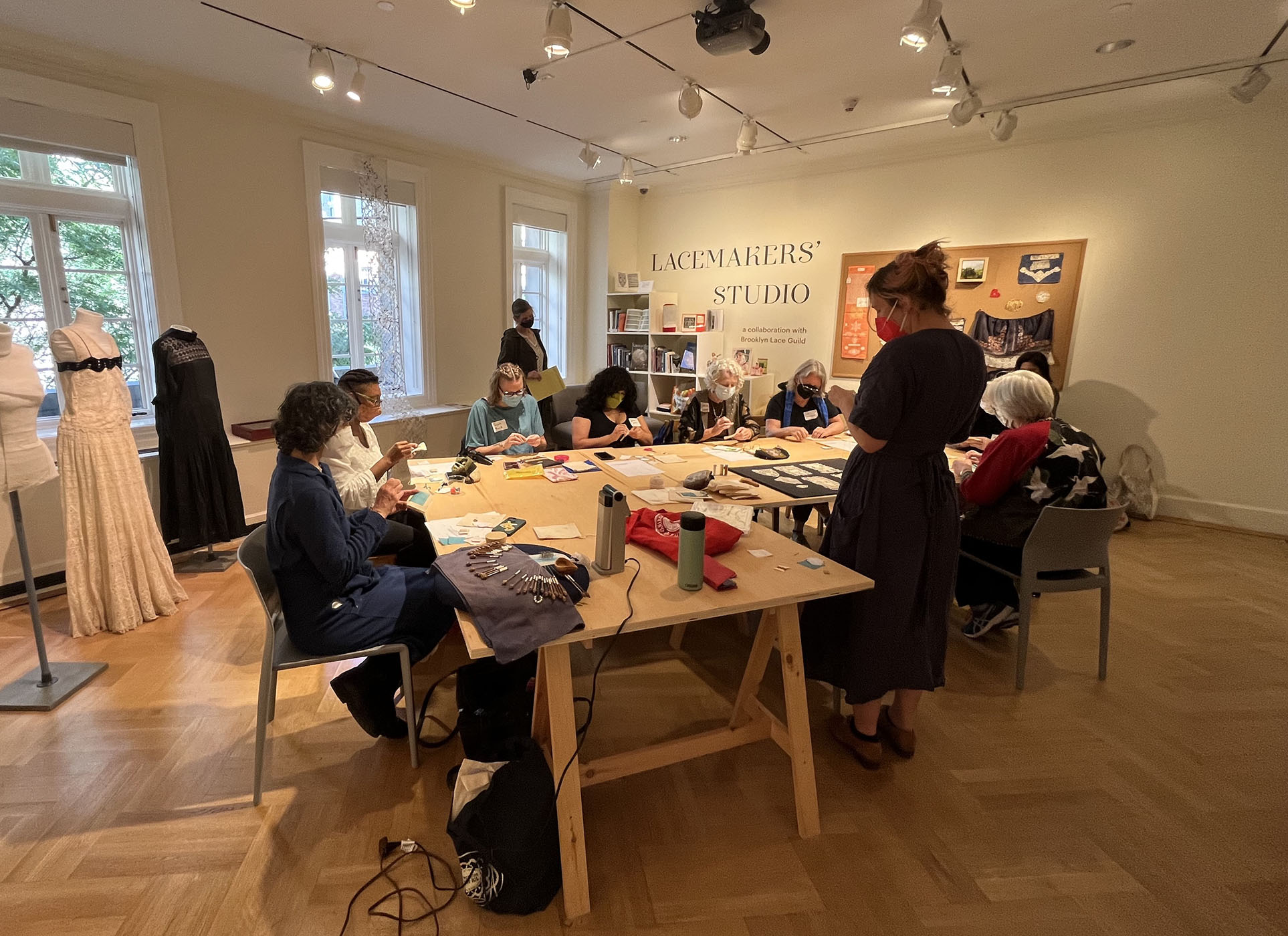
While the exhibition was on view at Bard Graduate Center Gallery, visitors to the studio could witness lacemaking in action every Saturday and Sunday from 1 to 5 pm.
Meet the Lacemakers

Linda Kay Benning
Linda Kay Benning has been on a fiber journey her entire life exploring work done primarily by women. She believes their fiber work enriched their lives with color and beauty. Often their skills provided supplementary income for the family, regardless of which continent they resided on. “I am an inch deep and a mile wide in the realm of fiber arts, focusing primarily on the heritage skills,” she recently explained. “My understanding and appreciation grows every time I try something new, often laughing when I examine my first attempt.” She is an active member of the EGA, Chesapeake Region Lace Guild, the International Organization of Lace, Inc., the Bobbin and Needle Lace Organization, Smocking Arts of America, and the local Nelly’s Needlers that support the Woodlawn Needle Arts Show annually.

Eva Holiday DeAngelis-Glasser
Eva Holiday DeAngelis-Glasser was born, raised, and resides in Hell’s Kitchen. She is a Taurus, a supporter of the New York Mets, and a graduate of Bennington College. Since 2007, Eva has worked in the Antonio Ratti Textile Center at The Metropolitan Museum of Art, where she is the Assistant Administrator. Eva is a fan of fiber art and enjoys attempting projects in quilting and knitting. A novice in lace, she is excited to be a new member of the Brooklyn Lace Guild.

Katherine Dunlevey
While working in the Conservation Lab at the Cleveland Museum of Art, Katherine Dunlevey was asked to participate in the rehousing project of the lace collection. As a weaver and textile artist who spent many years documenting the weaving methods of the Southeast Asian countries, the interlocking and weaving of the lace threads led to new exploration and a fascination with the techniques of lace. Katherine is on the Executive Council of OIDFA, an international lace organization.
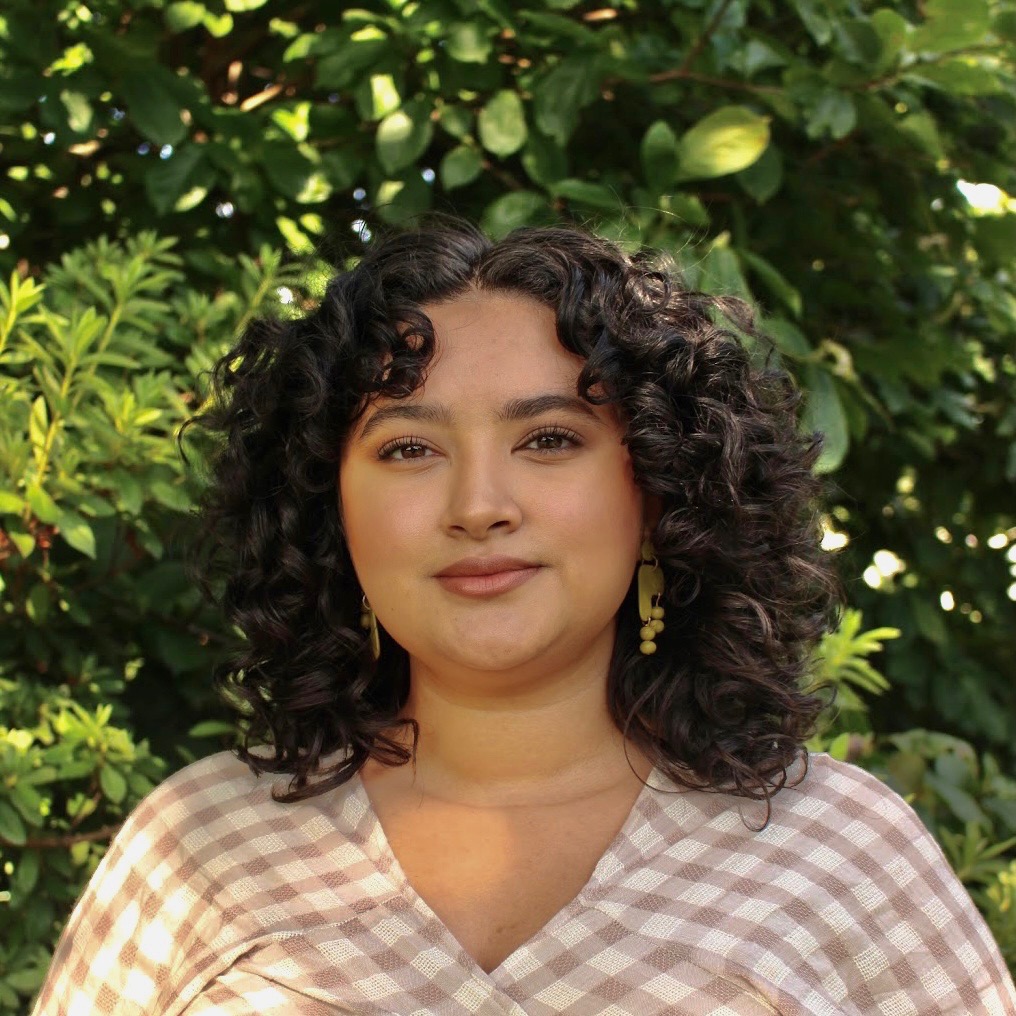
Glorimar Garcia
Glorimar Garcia is a Brooklyn visual artist, curator, and arts administrator. Born and raised in Ohio, she studied Painting and Art History at the Art Academy of Cincinnati. Rooted in personal experience and research, her work explores aspects of identity, memory, culture and gender. Garcia merges materials and found objects, salvaging discarded items like baseball cards to explore and manipulate their meaning. Significant projects include Cards for Puerto Rico, a benefit exhibition following the devastating hurricanes in 2017, and working with the Kurt Kocherscheidt Estate to create the first digital database of the artist’s work.
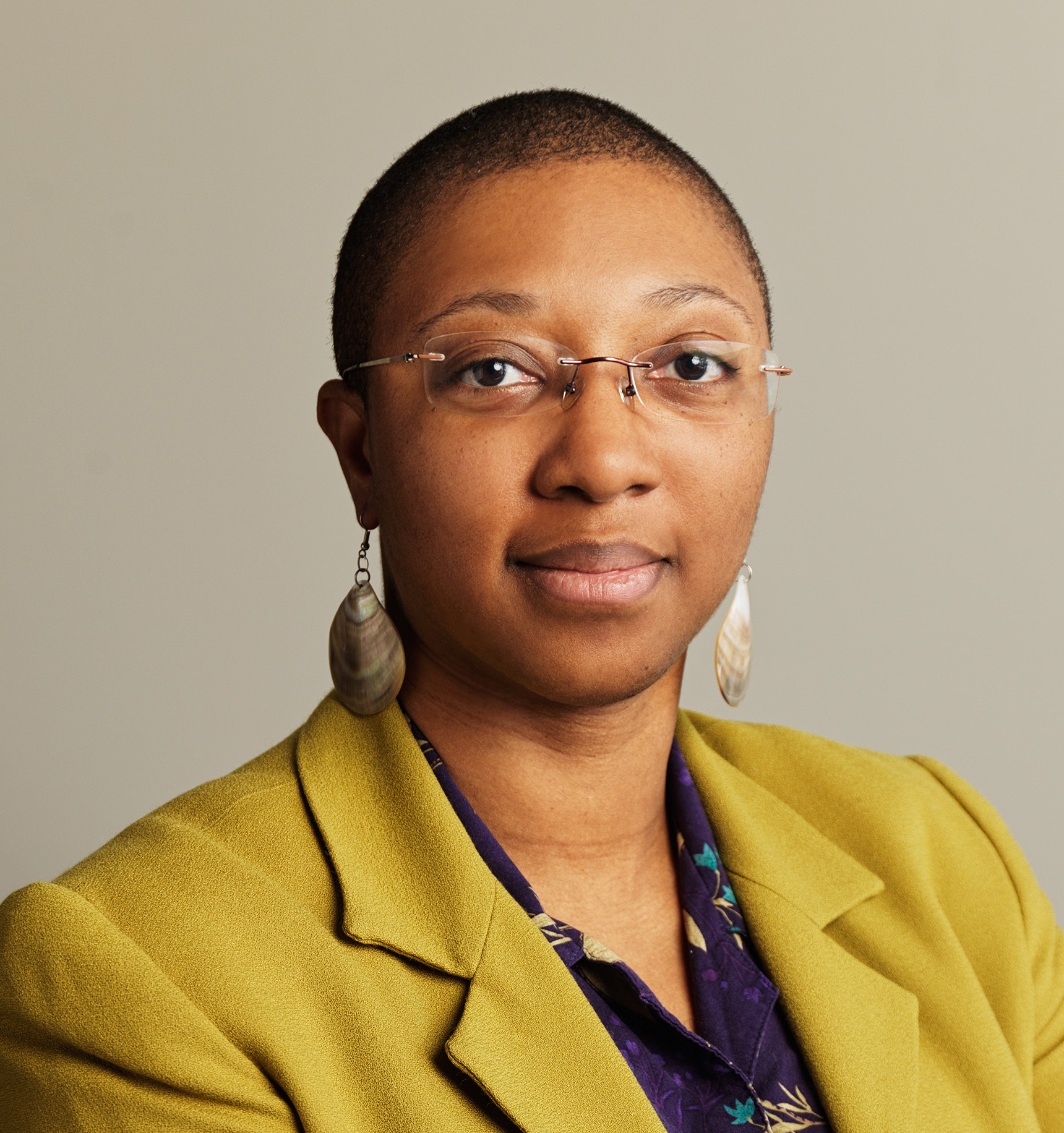
Ellyane Hutchinson
Ellyane Hutchinson, born and raised in NY state, discovered handmade lace in 2009 when she ventured to Lacis in Berkeley, California in search of a tapestry crochet hook. Two hours later she left with a newfound love of lace. “I am a lifelong Maker and fiber enthusiast. I’m interested in the tools and techniques of pre-industrial making and contemporary rapid fabrication. I enjoy exploring the ways different peoples use their local resources in ingenious and sustainable ways to create practical and beautiful textiles.”
Ellyane is President of Woodland Weavers and Spinners Guild, a member of the Lost Art Lacers, Liberty Lacers, and IOLI. She is an active member of Brooklyn Lace Guild. She spreads the love of fiber arts through demonstrating and teaching.
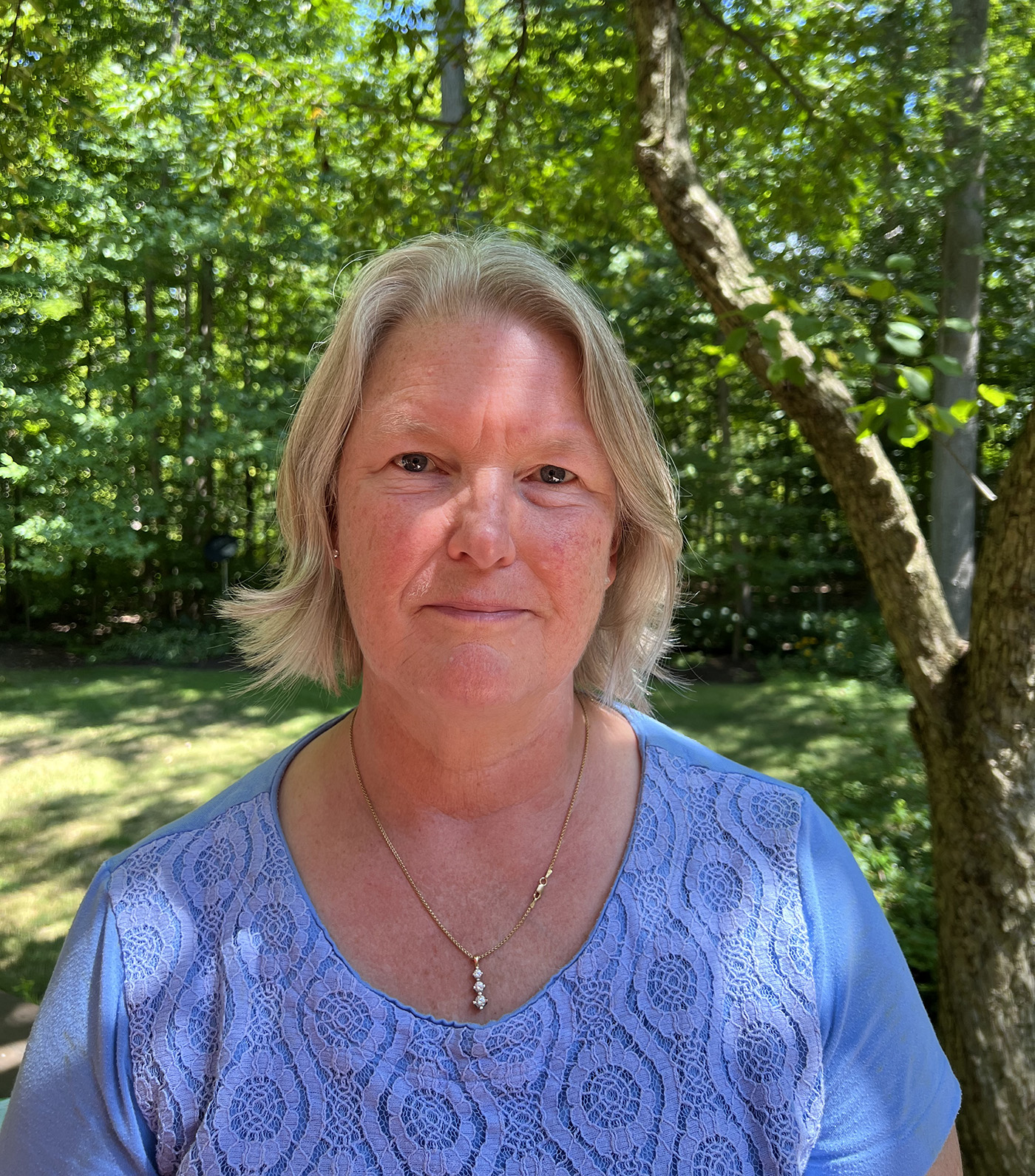
Sue Ingrassia
Sue Ingrassia got her first needle and thread at age 5 and never looked back. She later added a sewing machine, knitting needles, crochet hook and tatting shuttle and then went on to various looms and spinning wheels. She was thrilled when a group near her started bobbin lace, and she can’t wait to see what else she can fall into.
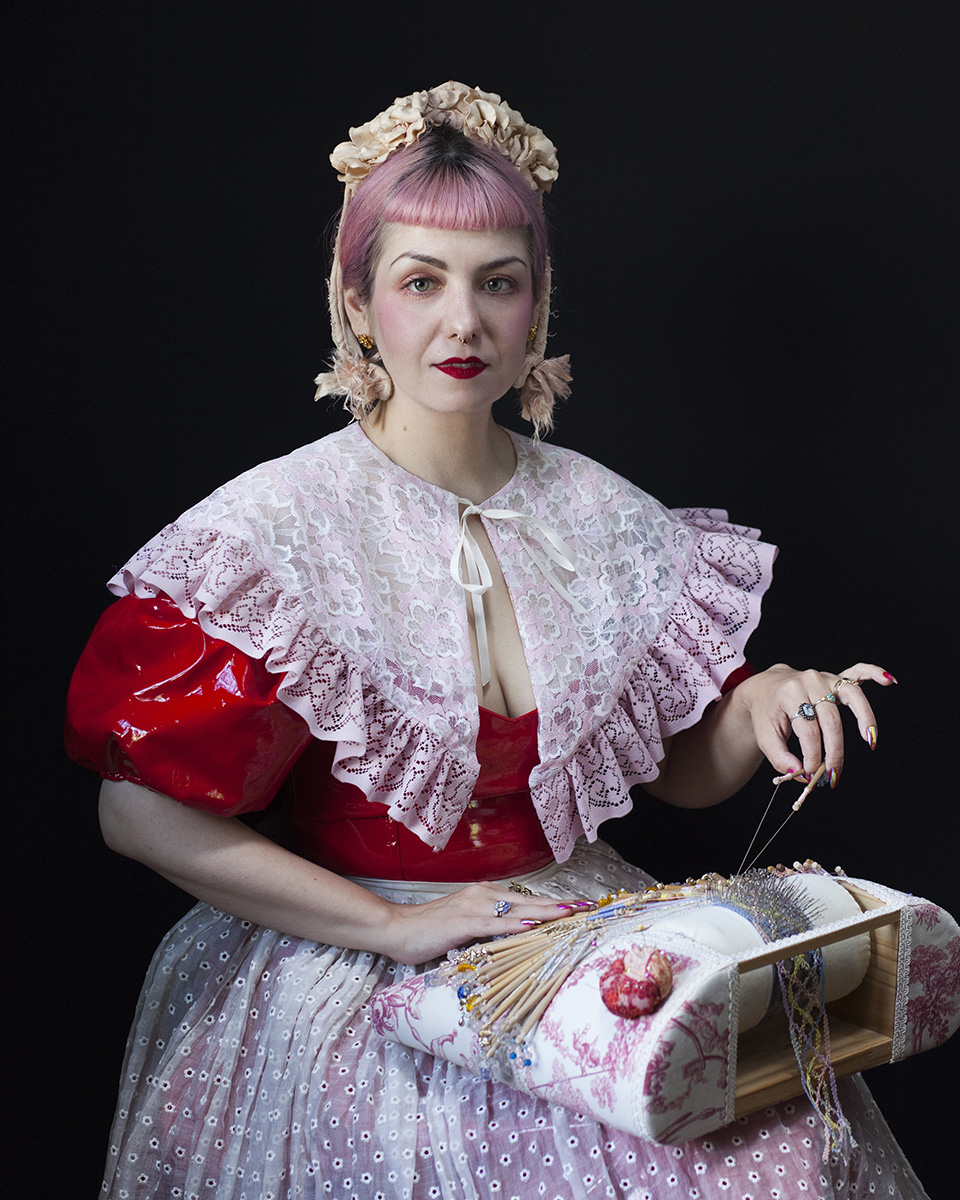
Elena Kanagy-Loux
Elena Kanagy-Loux descends from the Amish and grew up between the US and Japan, immersed in both traditional Mennonite craft and the DIY fashion scene in Tokyo. After earning her BFA in Textile Design from FIT, she won a grant to study lacemaking across a dozen European countries for four months in 2015. Upon returning to NYC, she co-founded Brooklyn Lace Guild and began teaching bobbin lace classes. In 2018 she completed her MA in Costume Studies at NYU and now works as the Collections Specialist at the Antonio Ratti Textile Center at the Metropolitan Museum of Art.
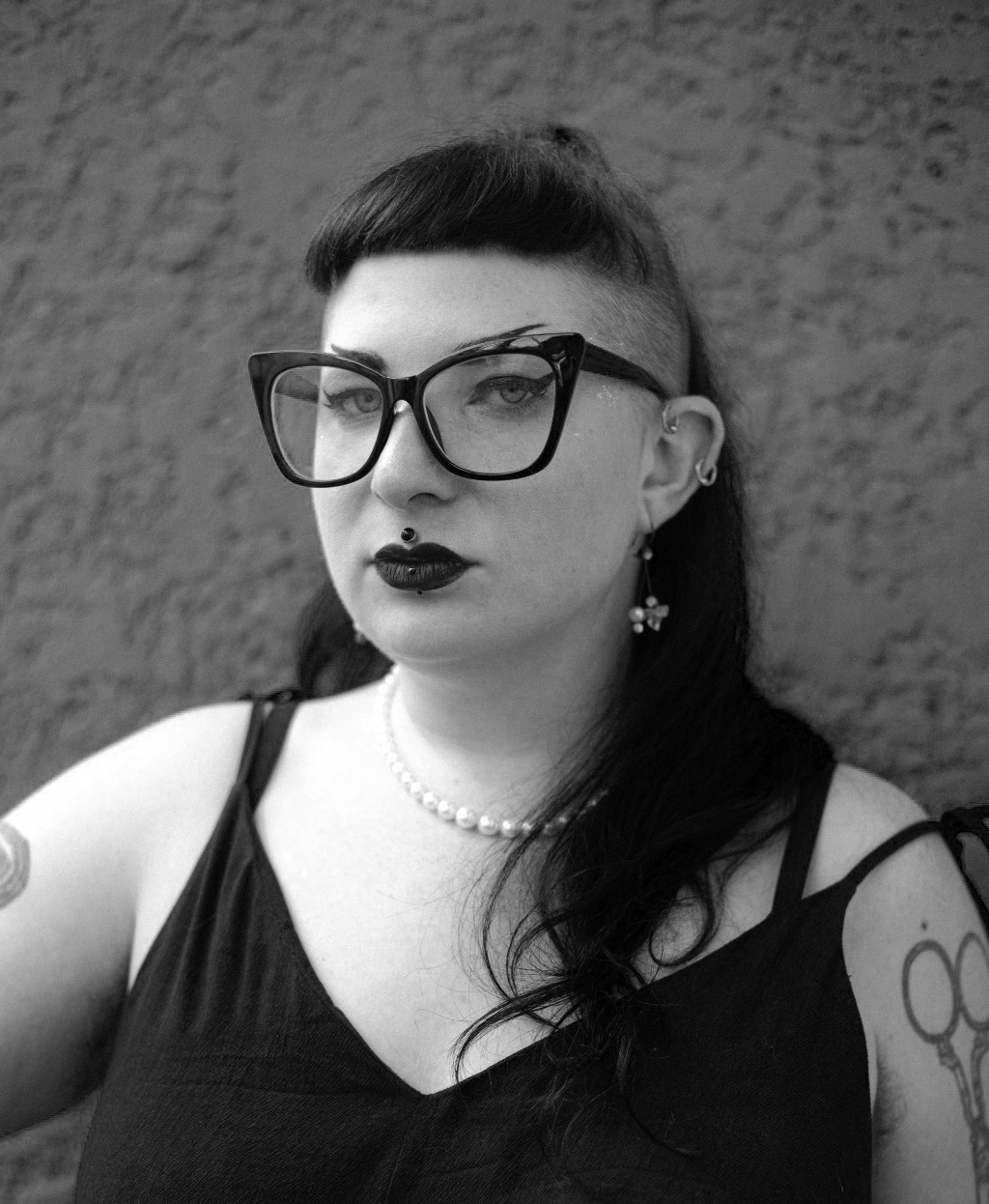
Layla Klinger
Layla Klinger is a hole maker, working with fiber, light and electric currents to investigate intimacy, erotic compulsions and beauty as merit. Their work spans installations and precious objects, and is based in traditional lace making as means of useless and coveted labor. She created site specific installations for the Little Islands Festival (Sikinos, Greece), New York Public Library (NYC), FRATZ Festival (Berlin) and Nightlight Festival (Tel Aviv), and has exhibited across the US and Tel Aviv. They received their MFA in Textiles from Parsons School of Design, where they are currently an adjunct faculty member.

Cynthia Madsen
Cynthia Madsen has been making art with thread and textiles since she was a young child. She learned to crochet from her maternal grandmother, embroider from her paternal grandmother, and her mother taught her how to knit and sew. Cynthia started making lace as a young teen when she her maternal grandmother taught her to tat and then quickly started experimenting making crocheted lace. In 2006 Cynthia took her first bobbin lace class and found it creatively, sensually, and intellectually stimulating. Everything about bobbin lace making is beautiful – the threads, the bobbins, the sounds, the possibilities!
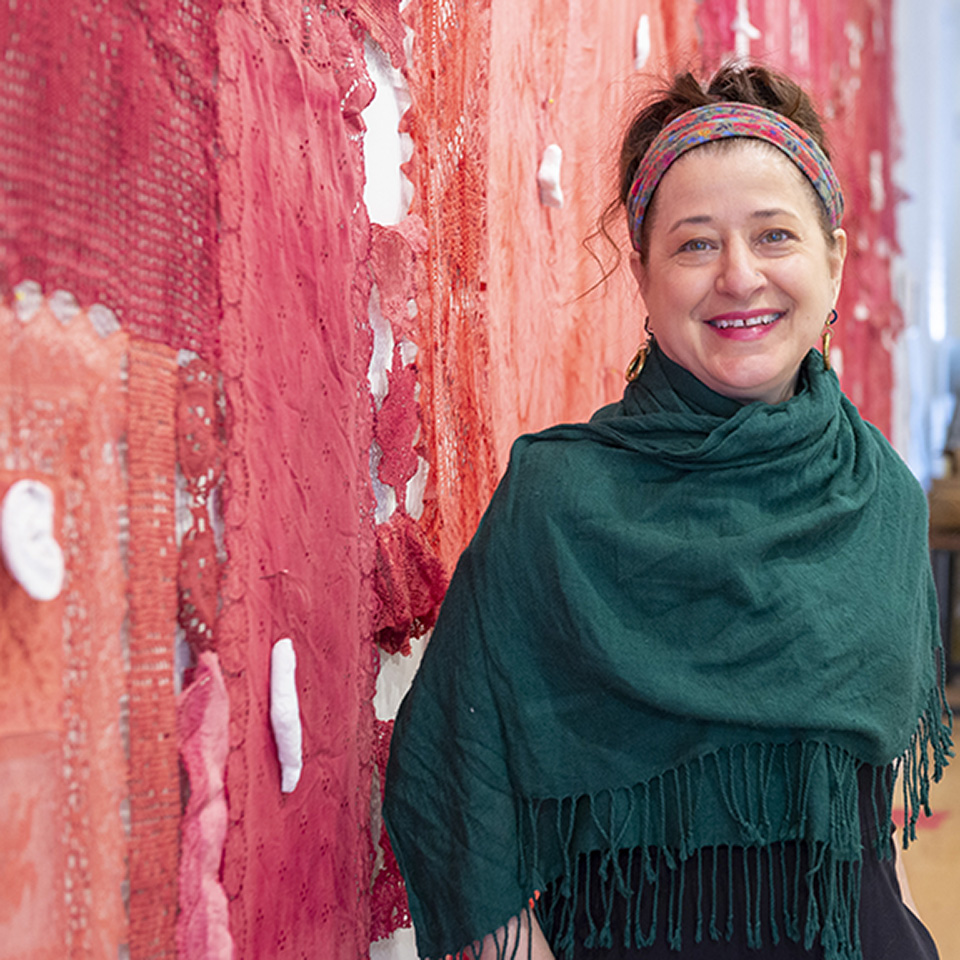
Patricia Miranda
Patricia Miranda is a textile installation artist, curator, educator, and founder of The Crit Lab and MAPSpace. In 2021 she founded the Lace Archive, an historical community archive of thousands of donated lace works and family histories. Her work has been exhibited at Jane Street Art Center, Garrison Art Center (Hudson Valley, NY) ODETTA Gallery, The Clemente Center, ABC No Rio, and Wave Hill (NYC); The Alexey von Schlippe Gallery at UConn Avery Point, (Groton, CT). Upcoming exhibitions include the Peg Center for Art+Activism, the Lyman Allyn Museum, and a solo exhibition at 3S Art Center in Portsmouth NH.
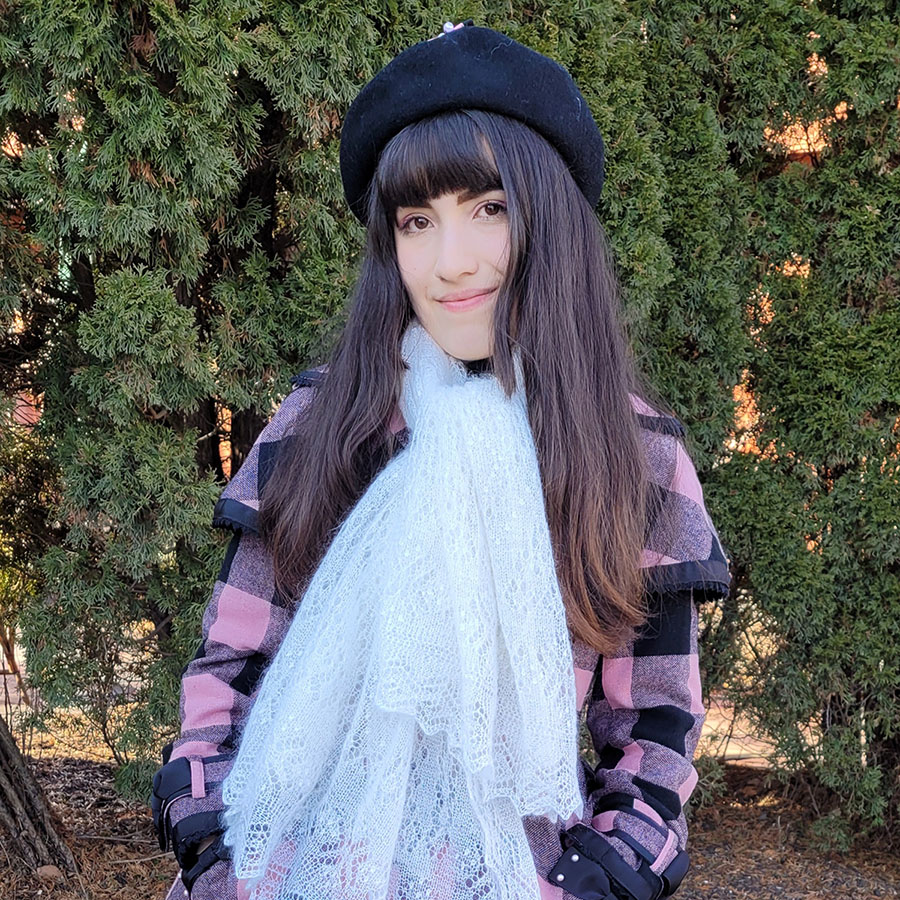
Kara Quinteros
Kara Quinteros was introduced to lacemaking in 2018 while pursuing her BFA in fashion design at Parsons, where she also first learned of Brooklyn Lace Guild. Since that first meeting Kara has explored lace making as applicable to her own garment design in various textiles, shapes, and styles. Currently she is pursuing integration of artisan lace making in her own brand, “graciela & grace,” in an effort to work with far-reaching lace communities as well as to be close to an art form she find incredibly beautiful and fulfilling.
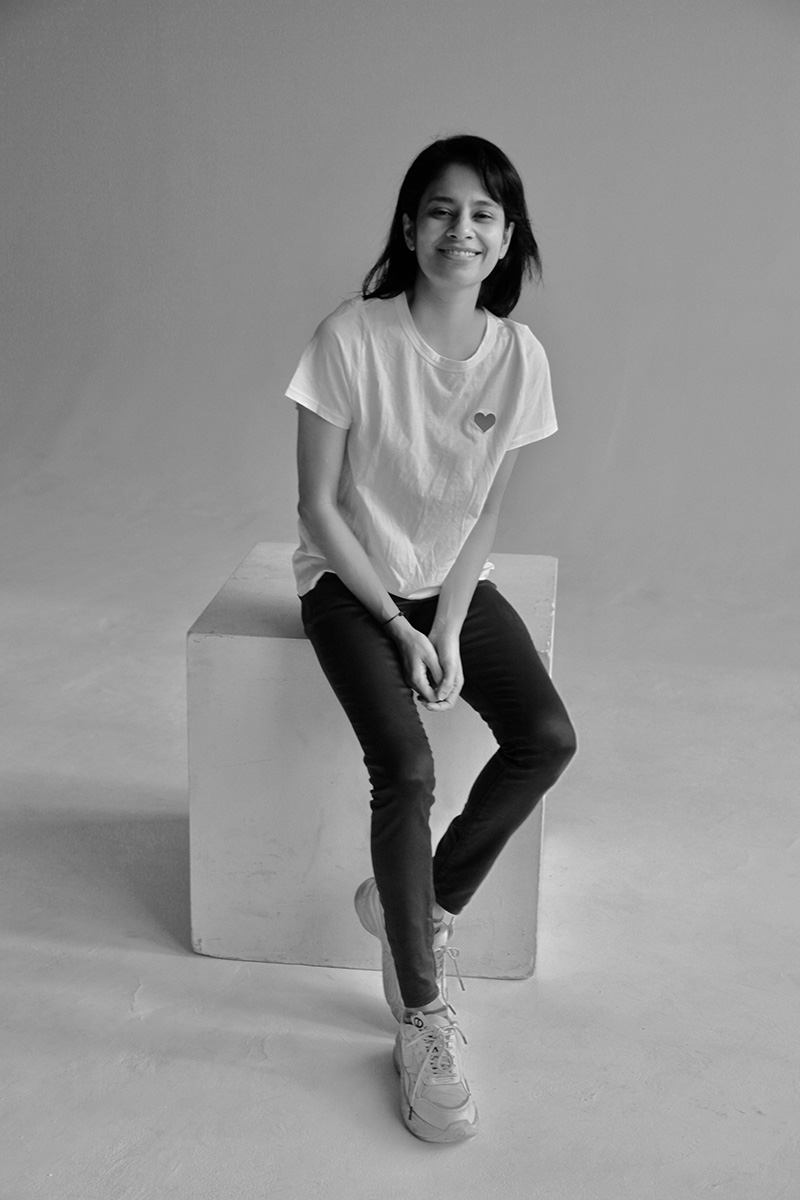
Kasuni Rathnasuriya
Kasuni Rathnasuriya is the founder designer of KÚR, a contemporary clothing label which incorporates handmade Sri Lankan bobbin lace in the signature line. She is the winner of the British Council’s Young Fashion Entrepreneur (YFE) 2011. Her work has been featured in renowned outlets such as Vogue, Harper’s Bazaar, Marie Claire and WWD. Kasuni has been active in global fashion events with her collections being showcased at IMG NYFW, Portland Fashion Week, Sunshine Coast Fashion Festival, Southbank London etc.
Published work at www.kurcollection.com / IG : kurnewyork
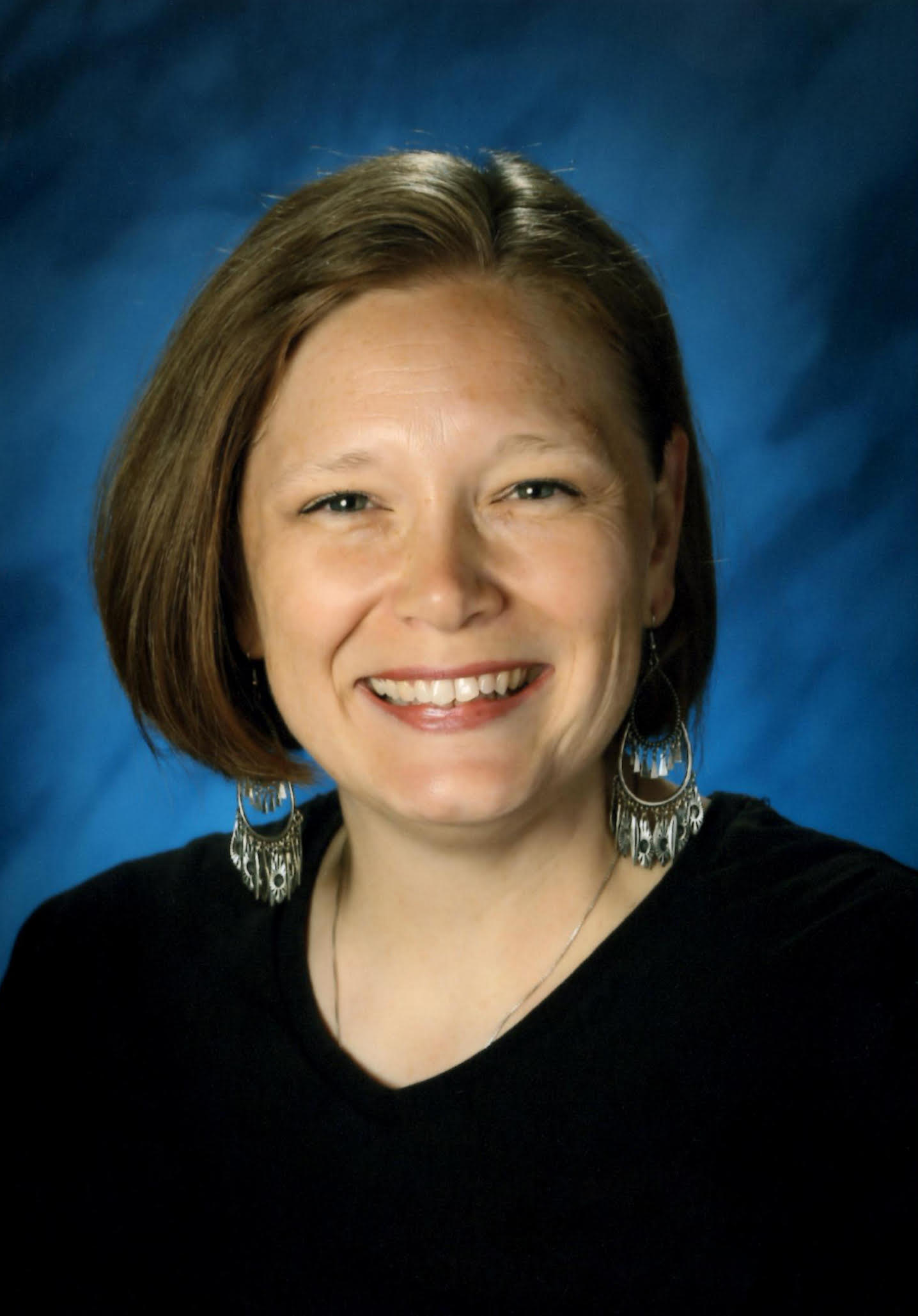
Cajah Reed
Cajah Reed learned tatting while volunteering at Four Mile Historic Park, an 1860’s reenactment estate, where she formed a connection with Freda Stevenson (amazing lace teacher) and the Rocky Mountain Lace Guild. She furthered her lace learning over the years through classes on many types of bobbin lace and design, tatting with the Shuttle Brothers, wire lace, as well as needlelace. Cajah is also part of The Adventurous Lacemakers and Brooklyn Lace Guild. Born and raised in Georgia, Cajah has lived an equal amount of her life in Colorado, where she currently resides.
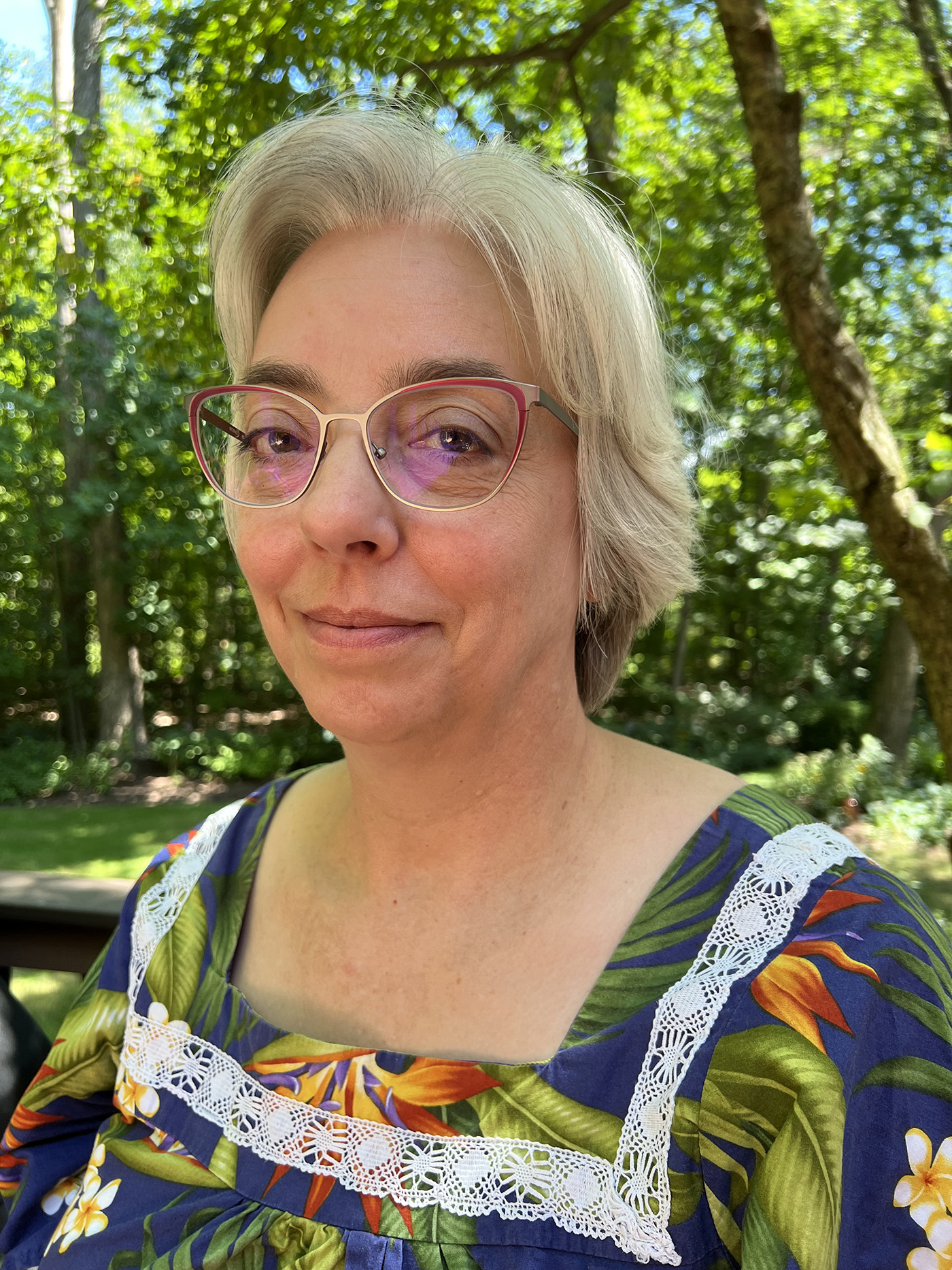
Stephanie Richards
Stephanie Richards began learning lace in the winter of 2021. Intrigued by the contrasting simplicity and complexity of lace making, Stephanie found she was also captivated by the feel and sound of bobbins. Also, who can resist a creative art that uses the term “cookie pillow”?! While very new to lace making, she is not new to quilting and owns a home-based long arm quilting and sewing business called Creative Threads, (c-threads.com). Incidentally, the woman who taught her to quilt is the same woman who is teaching her lace. Which only proves you need to choose friends carefully.

Sagarika Sundaram
Working in expanded textile-based practices, Sagarika Sundaram creates sculpture and installations that investigate the relationship between architecture, biology and the psyche. She studied at the National Institute of Design, Ahmedabad, at MICA in Baltimore, and has an MFA in Textiles from Parsons in NYC. Her work has been exhibited at Frieze New York, Nature Morte, New Delhi, and Frestonian Gallery, London, and she has recently been an Art Omi Resident, AIM Bronx Museum Fellow, and received the Hopper Prize. Sundaram is the deputy editor of the annual NYTM Talking Textiles journal and teaches at Pratt as Visiting Assistant Professor.

Devon Thein
Inspired by seeing lacemakers in Bruges, Devon Thein began to make lace in 1971. She has been a volunteer in the lace collection of the Metropolitan Museum of Art since 2000 and in 2012 selected the objects and wrote the label text for the exhibit Gems of European Lace, ca. 1600-1920. She was the guest curator and wrote the catalog for the 2018 Hunterdon Art Museum exhibit Lace, not Lace: Contemporary Fiber Art from Lacemaking Techniques. She has published over 50 articles about lace and has recently been presiding over a popular online lecture series for the International Organization of Lace.
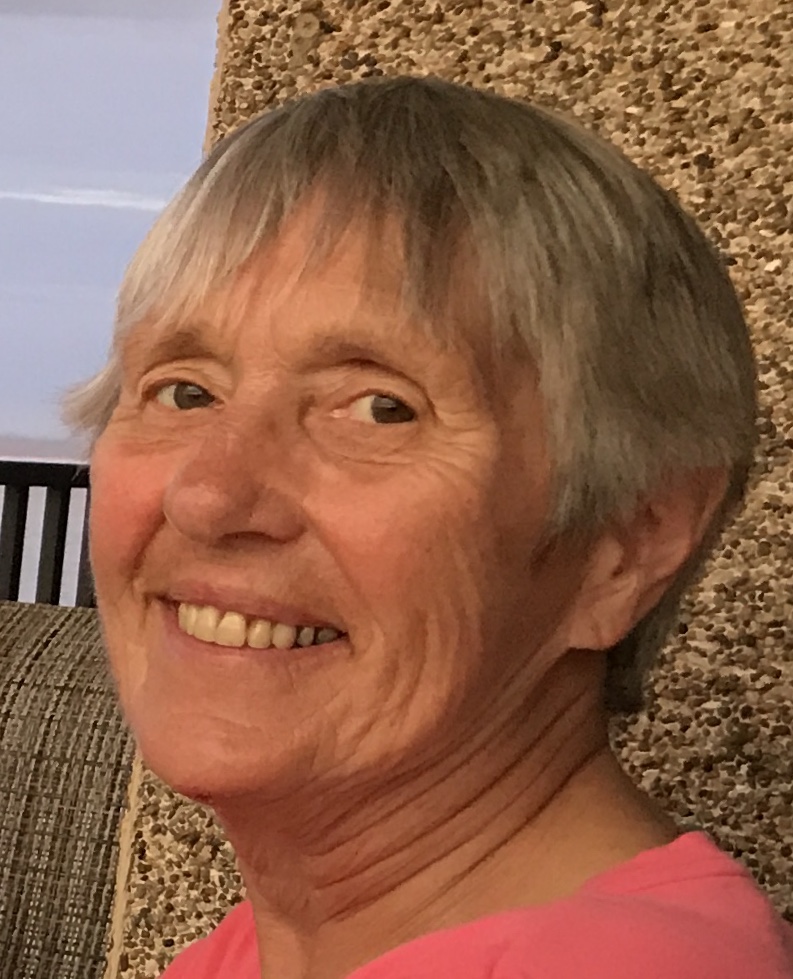
Karen Thompson
Karen Thompson has made, studied, and taught lace since the mid-1970s. From 1998 to present she has been a volunteer curator of the lace collection at the Smithsonian American History Museum, where she has developed and conducted Behind-the-Scenes tours of the lace collection, written six blogs about specific areas or objects in the collection, and been instrumental in making part of the Lace Collection available to the public on the Smithsonian website.
In 2017 she published The Lace Samples from Ipswich, Massachusetts 1789-1790. The book has a short introductory overview of the history of the Ipswich lace industry in the late 18th century followed by reconstructed detailed patterns and working diagrams for the 22 lace samples sent to Alexander Hamilton in 1790 from Ipswich, MA for his Census of Manufactures as evidence of the importance of lacemaking In Ipswich.
Virtual teaching was added in 2020.
